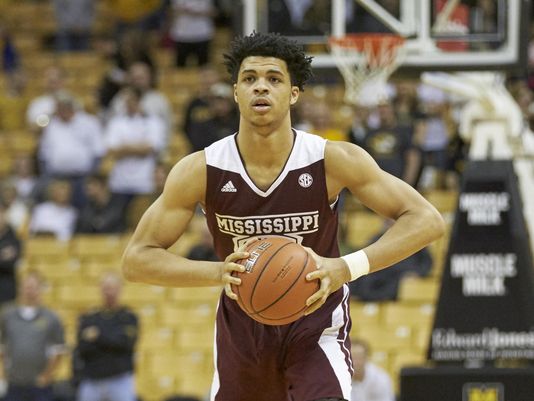Quinndary Weatherspoon Injury a Crippling Blow to Mississippi State
Posted by David Changas on November 23rd, 2016Mississippi State announced Monday night that its leading scorer, Quinndary Weatherspoon, will require surgery after tearing ligaments in his left wrist and miss the remainder of the season. The sophomore is the team’s leading scorer (18.8 PPG) and second-leading rebounder (5.0 RPG) through four games, notching a career-high 25 points in last Friday’s win over Boise State. His loss is a big blow to a Bulldogs team that was expected to finish in the middle of the SEC pack under second-year head coach Ben Howland. Even though an earlier blowout loss to Central Florida confirmed that the rebuilding process is ongoing, losing the cornerstone of that process is tough in the wake of last year’s graduations (Gavin Ware and Craig Sword) and transfer (Malik Newman to Kansas).

The loss of Quinndary Weatherspoon is a huge blow for Mississippi State (Gary Rohman/USA Today Sports).
With Weatherspoon out for the remainder of the year, Howland will need even more from his three top-100 freshmen: Tyson Carter, Mario Kegler, and Lamar Peters. Carter, a 6’4″ guard, is off to a nice start, hitting 11 of 25 three-pointers and committing only one turnover in 122 minutes of action. Kegler, a 6’7″ forward who already played 25 minutes per game, will see his playing time increase in Weatherspoon’s absence. Peters has played less than his fellow freshmen, but he has been solid in backing up the team’s only senior,I.J. Ready. The only player other than Weatherspoon who came into this season with any real experience, the diminutive point guard leads the team in assists (5.0 APG) and has a fairly low turnover rate (10.9%), but he struggles defending bigger guards and is a poor shooter from beyond the arc (27.3%). It is unlikely that he will be able to pick up the Bulldogs’ scoring slack.










































